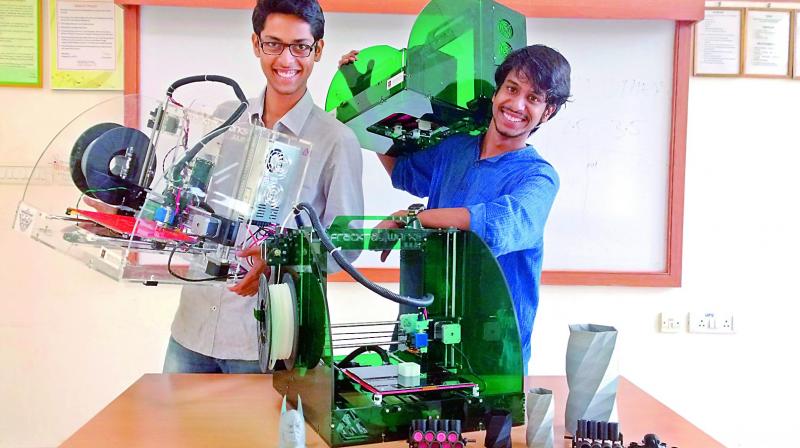Winds of change
Innovators Vijay Raghav Varada and Rohit Asil are using 3D printing to create an impact.

Vijay Raghav Varada and Rohit Asil from the city have an illustrious story to tell. What started just as a college project is now a registered 3D printing company which has clients from Ludhiana to Coimbatore, and even some multinationals. What really makes the two youngsters stand out, though is the social responsibly that their work exudes. They have developed a 3D printed Braille keypad for smartphones and Vijay has gone on an Antarctic expedition and put the first ever fully 3D printed wind turbine to use there. The renewable energy created out of the turbine was used to charge all of the team’s gadgets on the expedition.
On how these works came to be, the CEO and co-founder of Fracktal Works says, “These are our side projects that we use our weekends to work on. They’re not meant to be commercial. The way I was brought up sensitised me to the lack of technology for the differently-abled. My uncle works with UNESCO, I had attended one of their conferences and have had several conversations regarding this with him. My father, an army man, was posted in the Andaman islands where I got to see firsthand the importance of sustainability. This gave rise to the idea behind the wind turbine. I got the opportunity to work with Robert Swan during the expedition, author and environmental activist who was the first person to walk on both the poles. We are now working on manufacturing a 3D printer that is four times the size which was used to make this wind turbine, to make a larger one to power the whole of our office. I expect to achieve this by the end of this year.”
In fact, the very source of work that got them testing the waters of 3D printing was a project, related to the health sector. Rohit explains, “I met Vijay for the first time in college, Manipal Institute of Technology. He was a senior and the robot that he had built was mind-blowing. In order to meet him, I enrolled in one of the competitions during the fest in which my robot won and then Vijay took notice of me and called me to join their robotics team. We then started working on a mind-controlled robot. It uses brain waves that’s detected through a headset, to move. The robot would simulate the movements that we could replicate on a wheelchair, that a paraplegic can move around in, just using his brain. We went to many fests with this robot and at one, we won '5 lakh. It was while we were trying to find manufacturers for this company that we were introduced to 3D printing. We were able to manufacture our own parts with this tool. Eventually, the means became our end. The finances for the headsets were not working out but the 3D printers that we were manufacturing became a hit and we developed our company around it.” The Braille keypad also won the prestigious Hackaday Prize, that attracted a lot of eyeballs. “It has eight keys which can make characters, letters and numbers. We learnt Braille in order to code right and even tested on several visually impaired people and got feedback from them.” Vijay stresses on the importance of open source. “All the information that is needed to create this product is online, so anyone can make it and improve on. The idea is to make sustainability more democratised, not commercial,” he says.

